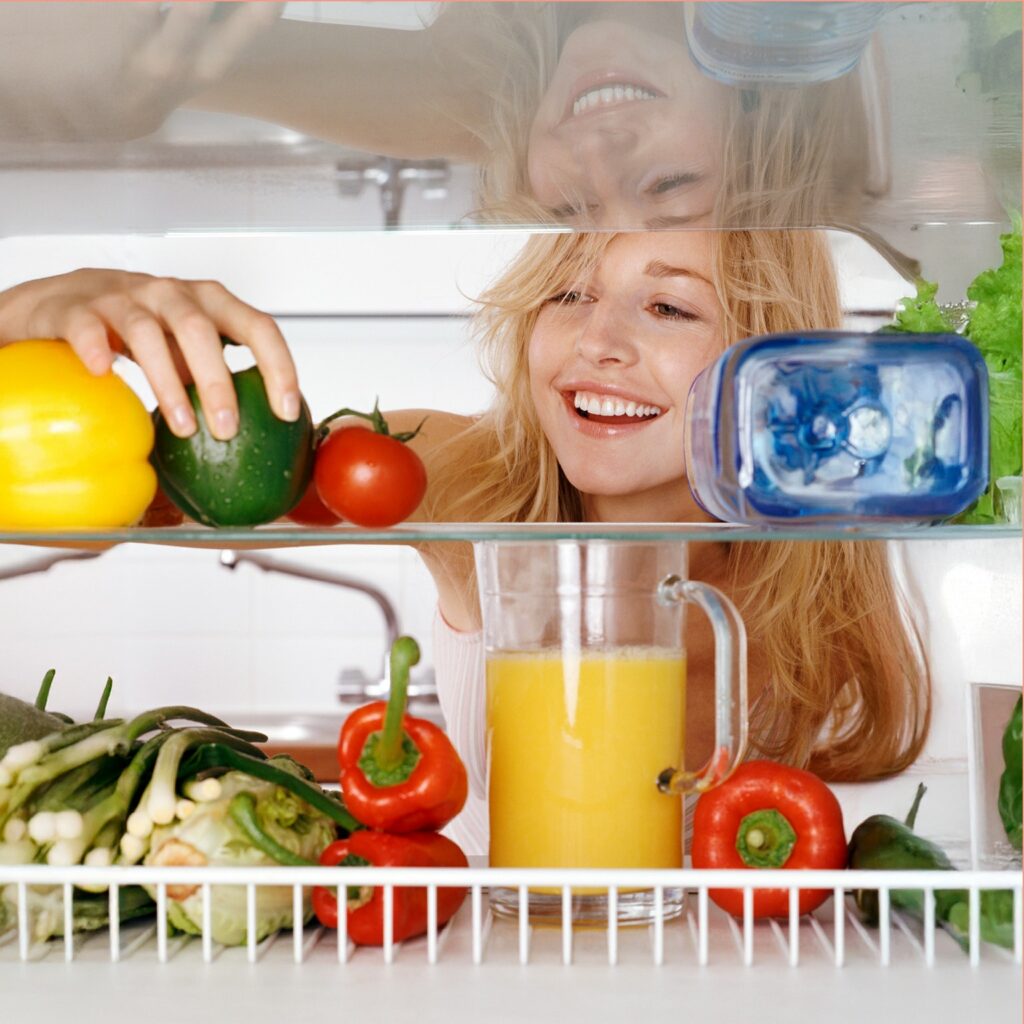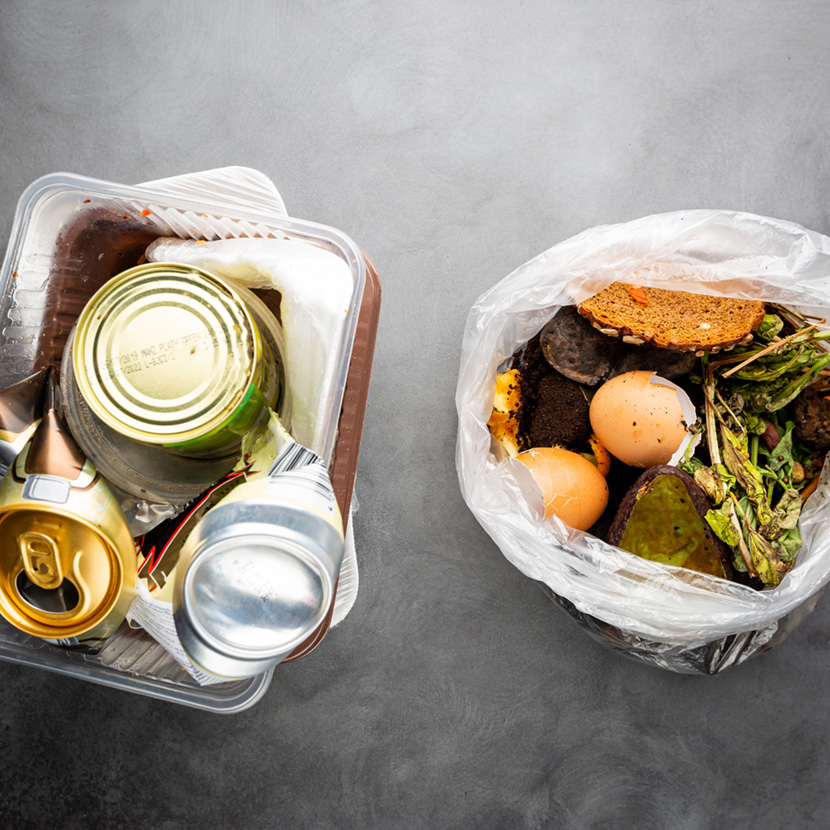V-STORY
Creative ways to tackle food waste


A social and environmental disaster: throwing away food
Food waste is one of the biggest global problems of our time. Millions of tonnes of food are thrown away each year, while at the same time many people do not have sufficient access to food. This imbalance is not only a massive social challenge, but also an environmental one. Growing food consumes valuable resources such as water, energy and land, and when food is thrown away, not only are these resources lost, but the degradation and disposal of the food creates additional climate-damaging emissions. Change is urgently needed – and, as is so often the case, it starts with us. In this article, we look at some creative and practical ways that businesses and individuals can take action against food waste – something that’s inspiring and also occasionally a lot of fun.



Turning food waste into plastic – research innovation

The solution to food waste is not only to throw away less, but also to make good use of the waste that is already generated. Research delivers a particularly innovative example of this: At Virginia Tech, scientists have developed a bioplastic made from food waste. This alternative to traditional plastic is made from organic waste such as fruit and vegetable scraps, and offers a sustainable solution in an era of plastic overuse. This approach shows that food waste does not necessarily have to become waste, but can serve as a valuable resource in new, environmentally-friendly products.
Equally innovative is the collaboration between British biotechnology company Clean Food Group and cosmetics manufacturer THG Labs. Together they want to produce an environmentally-friendly oil from food waste for use in beauty products.
Future model for the circular economy
This development is part of a wider trend towards the so-called circular economy. The aim here is to return waste products to the production cycle and give them a new purpose. By using food waste to produce bioplastics, companies can not only reduce their environmental footprint, but also develop innovative, sustainable products that have a positive impact on our environment.


Meal prepping – planning instead of wasting
Let’s look at our own doorstep: What can we do at home to reduce food waste? One particularly effective way of reducing food waste in everyday life is to plan meals – so-called „meal prepping„. The aim here is to plan meals for the week ahead in advance and shop accordingly. Thoughtful meal preparation not only avoids leftovers, but also saves time and money. Velivery wants to help you with this. In addition to providing ideas for everyday „prepping„, we offer you simple recipes that allow you to perfectly coordinate your shopping with the planned meals.
The benefits of meal prepping are many: Not only does planning mean you buy less, but you also use exactly what you need. Leftover ingredients can be used for the next meal, so less goes to waste. A well-thought-out weekly plan also ensures that fresh produce is used more quickly before it goes off. No more forgotten food in the fridge!
Smaller pack sizes: less is more
Another step towards reducing food waste is to buy the right amount. Products are often available in oversized packs that cannot be fully consumed in small households. The result is that some of the contents end up in the bin. To combat this, we offer small pack sizes that are particularly suitable for individuals or low-consumption households. They allow you to buy only what you really need – be it spices, fresh produce or dry goods.
This can make a big difference, especially for foods that are used infrequently. For example, it makes sense to buy smaller quantities of spices if they are only used once in a while. Even with fresh foods such as herbs, fruit or vegetables, it helps to choose smaller quantities to ensure that they are fully processed. This is not only good for the environment, but also for your wallet.

Apps against waste: Too Good To Go, etc.
The digital world also offers clever solutions to reduce food waste. One of the most popular apps is Too Good To Go. It allows people with the app on their phone to buy leftover food from restaurants, bakeries and supermarkets at heavily discounted prices that would otherwise be thrown away. These are often products that weren’t sold before closing time or are nearing their sell-by date but are still perfectly edible.
As well as offering a way to minimise food waste, the app creates a win-win situation for everyone involved: Consumers benefit from cheap food, while businesses do not have to dispose of their surplus goods. Other platforms and apps are based on similar concepts, giving surplus food a second chance instead of ending up in the bin.

Doggy bag: Take your leftovers home
Another simple but effective way to combat food waste is to use doggy bags in restaurants. You may have experienced this: a wonderful meal in a restaurant, but the portion was just too big! When you eat at a restaurant, you often end up with leftovers on your plate that are still edible, but are too much for a lunch or dinner. Instead of throwing these leftovers away, you can take them home in a doggie bag and eat them later. In many countries, especially the US, this is already common practice, while in Germany and other European countries there is still room for improvement.
But more and more people are not afraid to ask for their leftovers to be packed in the name of sustainability. It’s worth asking for a doggy bag in restaurants, therefore, if you can’t finish your meal. Many restaurateurs are happy to offer this option and the leftovers can either be eaten the next day or used in new dishes.
Creative use of leftovers: new dishes from old ingredients
The art of creating new dishes from leftovers is one of the most fun and sustainable ways to combat food waste. Imaginative leftover meals not only offer a chance to make good use of leftover food, but also encourage people to try out new recipe ideas.
With a little imagination, you can turn leftovers into delicious meals: leftover vegetables can be used to make a soup, stew or pasta sauce, while dry bread can be used to make delicious dumplings or croutons. International cuisine also offers plenty of inspiration for how to make the most of leftovers – from Italian frittatas to Asian stir-fry dishes. It’s important to be open to new ideas and to allow yourself to be inspired by leftovers. This often leads to completely new favourite dishes. Social media channels are now full of ideas for this creative and sustainable kitchen hobby.

Top 10 tips to prevent food waste:
1. Plan your shopping: Draw up a plan before you shop – including from Velivery – so that you only buy what you need and avoid impulse buys.
2. Store food properly: Proper storage (e.g. fridge zones) means products spoil more slowly.

3. Preserve food: Make jams, chutneys, compotes or sauces from leftover fruit and vegetables to extend their shelf life. You can also use clever preservation methods such as fermentation to preserve foods such as vegetables from the garden.
4. Use leftovers: Use leftovers in new dishes.

5. Check the sell-by date: Foods with a shorter sell-by date should be on the front of the fridge so you don’t overlook them. Some foods are still good to eat after their sell-by date. Find out more!
6. Use apps like Too Good To Go!

7. Make the most of your vegetables: Did you know that the skins, stems and leaves of many vegetables can be used in soups or salads? Make sure you look into this!
8. Foodsharing: It seems obvious that we should share food on platforms or in our neighbourhoods before it goes bad.

9. Smart fridge: Companies such as LG are developing fridges that monitor their contents and remind you when you need to do something.
10. Edible packaging: Startups such as Notpla are producing edible packaging that also reduces food waste.
11. Freeze leftovers: Many dishes, as well as bread and the like, freeze well. It’s best to do this immediately after buying or cooking them, before they spoil.


Many levers for a new food consciousness
Food waste affects us all – and everyone can do something about it. Creative approaches such as meal prepping, the use of doggy bags and clever apps such as Too Good To Go can not only reduce your own carbon footprint but also enrich your everyday life. Businesses and research institutions are also playing their part in developing innovative solutions that make good use of food waste.
The most important thing is to create a new awareness of how we use food: Every product we buy has a value – not only financially, but also ecologically. Ultimately, food is a gift from the earth for which we can be grateful. By shopping, planning and cooking more consciously, we can all help to reduce the amount of food that ends up in the bin. Every small step counts – for a more sustainable future and a respectful use of our resources.
The Recipes
Here is a selection of delicious recipes to save food and prevent it from going to waste:

















